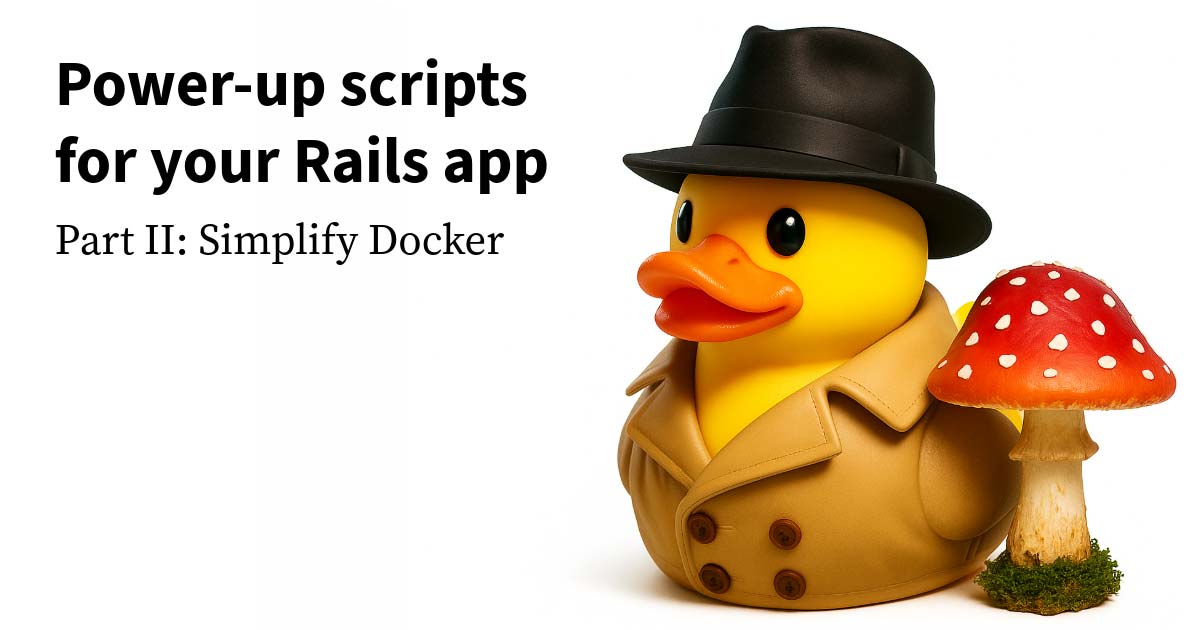So you’re working on a Rails upgrade in a pretty big app that has lots of active development. The app’s pretty far behind Rails versions—let’s say it’s on Rails 4.2. It’s tempting to upgrade straight to the latest Rails version, but you decide to take an incremental approach and upgrade to the next point release, Rails 5.0.
You have a feeling this upgrade is gonna take a while, and instead of trying to maintain a long-lived branch, you choose to go with a dual booting strategy. You do this with the Bootboot Bundler plugin and have dual booting setup in no time. You open a PR with the changes and wait for a green build, but before any tests are run, you see a weird error:
Unable to find a spec satisfying bootboot (>= 0) in the set. Perhaps the lockfile is corrupted?WAT.
Bootboot doesn’t play well with older dependencies
You’re most likely seeing this error because your CI environment is installing gems with Bundler’s deployment flag. One of the things the deployment flag does is freeze the Gemfile against gem versions specified in Gemfile.lock so gems can’t be changed (you generally don’t want unexpected gem changes to happen as part of the deploy process). Since Bootboot is a Bundler plugin, it gets installed every time the Gemfile is evaluated. The Gemfile isn’t frozen in development, so Bootboot gets installed with no problem. It is frozen on CI, however, so you get an error. 😕
Here’s the good news—this is a known issue! And it’s been fixed!! 🥳 Bundler has been updated to allow plugin installs when the Gemfile is frozen. Now we just need to upgrade Bundler, right?
Here’s the bad news. That change was released in Bundler 2.0.2, but you can’t use Bundler > 2.0 on Rails 4.x. 😭
[Note: The Bundler restriction is relaxed on Rails 5.0, allowing Rails to be used with Bundler 2+. If you’re on Rails 5+, try upgrading Bundler to get past this issue. But if you can’t upgrade Bundler, read on!]
To workaround this issue, the Bootboot README recommends disabling Bootboot when the Gemfile is frozen. You’d do this in the Gemfile with
plugin 'bootboot' unless Bundler.settings[:frozen]This gets rid of the error, but now you won’t be able to use Bootboot in environments where gems are frozen. This kinda defeats the point of using Bootboot though, right? You’ll be able to dual boot Rails 4.2 and Rails 5.0 in development, but you won’t have a way to do it in CI, staging, production, etc.
Now what?
Docker FTW
If your deployment environments are Dockerized, there are a few tricks you can use to get this thing working. To demonstrate, we’ll use the following Dockerfile as a reference.
[Note: Rails will soon ship with more Docker support. New Rails apps will be generated with a Dockerfile that can be used as a starting point for production environments. There’s also a new Docked Rails CLI for local development in Docker.]
# syntax=docker/dockerfile:1
FROM ruby:2.7
WORKDIR /myapp
# Install Bundler
RUN gem install bundler:1.17.3
# Install application gems
COPY Gemfile Gemfile.lock ./
RUN bundle install --deployment
# Copy application code
COPY . .
# Add a script to be executed every time the container starts.
COPY entrypoint.sh /usr/bin/
RUN chmod +x /usr/bin/entrypoint.sh
ENTRYPOINT ["entrypoint.sh"]
EXPOSE 3000
# Configure the main process to run when running the image
CMD ["bin/rails", "server", "-b", "0.0.0.0"]In the first part of the Dockerfile, we’re copying the Gemfile and Gemfile.lock to the container’s working directory and installing the app’s gems with the deployment flag.
# Install application gems
COPY Gemfile Gemfile.lock ./
RUN bundle install --deploymentWe still have the workaround that prevents Bootboot from being installed when the Gemfile is frozen. So
- Bootboot won’t be installed in the container
- The container currently only has the Rails 4.2 gems installed
Now we’ll change the Dockerfile, so the container also has Rails 5.0 gems installed. If Bootboot were available, we’d only need to add
COPY Gemfile_next.lock ./
RUN DEPENDENCIES_NEXT=1 bundle install --deploymentWhen DEPENDENCIES_NEXT is set, Bootboot will tell Bundler to use the Rails 5.0 gems by
- using the Rails 5.0 gems specified in the
if ENV[DEPENDENCIES_NEXT]section of theGemfile - resolving Rails 5.0 gem versions against
Gemfile_next.lock
Without Bootboot, the first step will still work as expected because it’s not specific to Bootboot. Bundler will evaluate whatever Ruby code is in the Gemfile. The second step will fail though. Without Bootboot, Bundler assumes the lockfile is named Gemfile.lock as it matches Gemfile. Bundler would then resolve the Rails 5.0 gem versions against Gemfile.lock that has Rails 4.2 gem versions. It ain’t gonna work.
We need to tell Bundler to use Gemfile_next.lock and not Gemfile.lock when resolving Rails 5.0 gem versions. Bundler doesn’t expose a way to specify what lockfile to use, but we can tell it what Gemfile to use. 😁
We’ll add a few lines to the Dockerfile. After installing the Rails 4.2 gems we’ll do
COPY Gemfile_next.lock ./
COPY Gemfile ./Gemfile_next
RUN DEPENDENCIES_NEXT=1 BUNDLE_GEMFILE=Gemfile_next bundle install --deploymentThis will add two files to the container: a copy of Gemfile_next.lock and a copy of the Gemfile named Gemfile_next. Then, we’ll get Bundler to use Gemfile_next.lock by telling it that the BUNDLE_GEMFILE is Gemfile_next. And now our container will have both Rails 4.2 and Rails 5.0 gems installed. 🥳
Finally, we need to expose a way to run the containers with Rails 5.0 gems. Looking back at our Dockerfile, we can see there’s an entrypoint.sh script that gets run every time the container starts.
# Add a script to be executed every time the container starts.
COPY entrypoint.sh /usr/bin/
RUN chmod +x /usr/bin/entrypoint.sh
ENTRYPOINT ["entrypoint.sh"]In entrypoint.sh we’ll use DEPENDENCIES_NEXT to set BUNDLE_GEMFILE before executing the container’s command.
#!/bin/bash
if [[ -v DEPENDENCIES_NEXT ]]; then
export BUNDLE_GEMFILE=Gemfile_next
else
export BUNDLE_GEMFILE=Gemfile
fi
# Exec the container's main process (what's set as CMD in the Dockerfile).
exec "$@"This lets us abstract away the fact that Bootboot isn’t available in the containers. When DEPENDENCIES_NEXT is set, we’ll set BUNDLE_GEMFILE to Gemfile_next, so the Rails 5.0 gems get used. Otherwise, we’ll set BUNDLE_GEMFILE to Gemfile and use the Rails 4.2 gems by default.
And with that, we can effectively use Bootboot when the Gemfile is frozen on Rails 4.x (and pre-Bundler 2.0.2). 🎊
tl;dr: I want to use Bootboot on Rails 4.x and the Gemfile is frozen and I’m using Docker
Your Docker setup will probably be different, but the gist here is:
In the container setup
- Install the production gems as normal
- Make a copy of the
GemfilenamedGemfile_next - Install the Rails upgrade gems by setting
BUNDLE_GEMFILEtoGemfile_next
When the container starts
- If
DEPENDENCIES_NEXTis set, setBUNDLE_GEMFILEtoGemfile_next. Otherwise, set it toGemfile.
All’s well that ends well
When working on Rails upgrades for big, old apps, you’ll likely run into situations like this where new things don’t work with old things. And it can be a very frustrating experience. But with a little bit of patience, fortitude, and creativity you can usually get the computers to do what you want ’em to do.
h/t to this Bootboot issue for giving me faith that there had to be a way to get this to work











